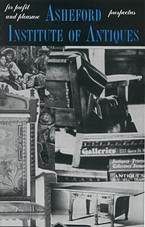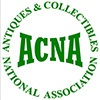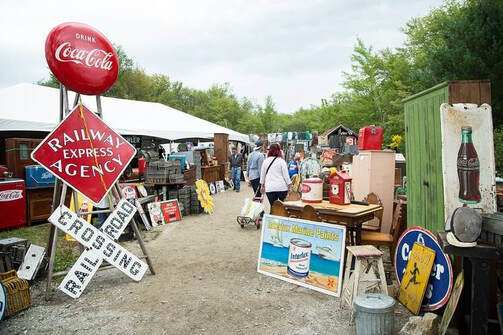 Dealers Report Strong In-Person Sales Dealers Report Strong In-Person Sales New York - A number of years ago, a somewhat famous antique dealer in New England once remarked that he had a much better chance of selling his high-end Georgian furniture at flea markets than he did online. While this may have been an exaggeration to some degree, and times have certainly changed since then, it still makes the point that what sells in the decorative arts market can often be determined not only by what's currently trending as popular, but also by the location or venue from where it's being sold. In theory, the Internet should have leveled this playing field long ago, but ask virtually any antique dealer with a couple of decades under their belt, and they'll tell you that by evening-up the playing process, the Internet also ironed-out some of the competitive wrinkles and strategies often only found in real-world markets. Sure, one can have a better website, a larger digital marketing budget, and perhaps greater online technical proficiency as to how things work, but in the end, online sales and corresponding e-storefronts on behemoth websites like Etsy, 1stdibs, and Ruby Lane, all tend to have a sameness about them that can make it hard for dealers and vendors to truly establish and differentiate themselves competitively from one another. This isn't to say that online retail outlets don't work, or don't provide their clients with options for distinguishing their businesses from each other, but only that in the past few years many antique and vintage dealers appear to be returning to a tried-and-true method for successful entrepreneurship that allows them a greater degree of competitive experimentation, and which is based on an in-person experience. 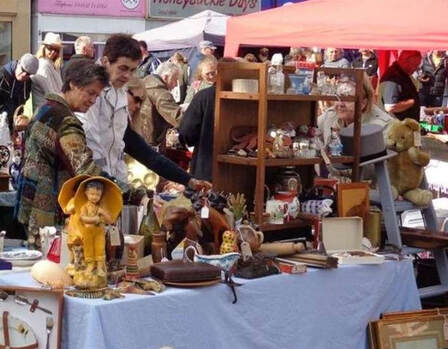 Shoppers Are Returning To Touch & Buy Purchases Shoppers Are Returning To Touch & Buy Purchases For Jeff Howard, who runs an estate sale business and mid-twentieth century themed vintage goods store in Southern California, the decision to pop-a-table and tent and return to meet-and-greet sales was one borne out of necessity rather than anything else. "I've bought and sold plenty of things online," says Howard, "but recently I decided to return to where I first started, after noticing a flatline in some of my online sales." Howard says he set-up a weekend booth at one of the state's largest flea markets where he used to vend prior to his current bricks-and-clicks business. "It's been great," he says, "the crowds are back, and I'm able to bring specific stock from my store like metal signs and automobilia that I know will sell in my booth." Howard believes he's able to get far more eyes-on his inventory at the flea market than in his store due to its location, and the fact that the people walking by are mostly committed buyers. "I have to pay for space," he says, "but even with that, my total weekend sales are up by about 200% over normal." For others in the industry, it's the "committed" sentiment expressed by Howard that seems to resonate the most. Stan Darling, who's taken over the family run auctioneering and antique business in Texas, says he thinks people might have a bit of Internet fatigue after the pandemic and are simply hankering to get out. "Our in-person sales have been fantastic this year," says Darling. "We're exceeding our pre-pandemic levels by a long-shot, and the people attending the auction sales tend to be buyers, not looky-loos." Darling says that while they've had the digital live-bid option for a number of years at most of his sales, what he's really noticed recently is the uptick in people wanting to get the hands-on experience before they purchase. "I've also got other antique dealers from around the area who are coming to me with their inventory," says Darling, "just so they can add it to one of our sales." Hector Diaz, a local dealer from Galveston, who uses Darling's company, says he's almost getting retail-prices at auction for the furniture he's trucking in from his storage site, which he normally uses as a base for his online shipping and distribution. "Five years ago - no way," says Diaz, "but today I'm moving more case pieces and heavy Victorian stock at a better overall price than I've ever done before." Most dealers are quick to point out that while the hybrid online/offline version definitely still works, it's become increasingly clear that the public's interest in attending live sales events has spiked dramatically over the past year. "I just think the whole Covid thing re-set a lot of peoples priorities," says Shelly Hoffman, who manages a large antique and vintage mall on the outskirts of Kansas City. "It's crazy that we were locked down only a a year or two ago, and now we're literally having to set counter-limits on the number of people who can enter the mall." According to Hoffman, her booth dealers are also reporting some of their strongest numbers ever, with many admitting that their online sales have been overtaken by customers who arrive on foot. "People are literally getting into bidding wars right in front of vendors booths," explained Hoffman. "I've never seen this kind of frenzied buying before except maybe at online auctions." David Harvey, who's had a booth at the mall for more than ten years, says that in the past there were always spaces opening up with vendors coming and going, but that today the wait-list for a booth can be anywhere from twelve to twenty-four months. "I've had to hire someone to man my space just so I can go and pick inventory," says Harvey. "I'm not complaining, but it can be a bit stressful trying to keep up with the demand sometimes."  More Than Just Food At Farmers Markets More Than Just Food At Farmers Markets Harvey isn't alone in his dilemma, as a group of vintage enthusiasts with shops on Etsy decided to try out their own form of a Farmers (slash Vintage) Market, in one of Ohio's historic eastern towns. Spearheaded by Helen Olsen, the group who all live within a relatively short radius of each other, decided to take their online retail shops into the real world after noticing the success of agricultural vendors at many of their local farmers markets. "We were stunned by the response," said Olsen. "We tried to pick inventory that could be set-up and broken-down quickly, and it literally sold out by days end." Olsen said she and her cohorts have refined the selling process over the last few months by concentrating on offering what's popular online, and then adding those items to their tents on the weekend. "It's been a great success," said Olsen, "we've had tremendous sales this year, and are hoping it continues well into the coming months." Olsen however, did acknowledge that she probably couldn't have managed on her own if it wasn't for her friends and colleagues help. "Without the other girls from our Etsy group scouring the countryside for additional inventory during the week, none of this would have been possible," she said. As for her online sales, Olsen says they're still holding strong and believes they'll continue to do so, but now thinks there's no question that a retail outlet is going to be part of her groups immediate future, especially as the cost of shipping for online sales continues to rise. "We already have someone out looking for space for us," she says, "It's no longer a matter of if we're going to add a full-time face-to-face business, but just a question of when." For many of the older dealers out there, the return to in-person sales is a welcome sight. "Part of the reason I got into this businesses was the social aspect," says Jeff Howard. "I've always enjoyed chatting with, and meeting new people." For Howard and others in the industry, it would appear that it's not just the ethereal concept of fads, trends, and online imagery that's moving the antique and vintage markets forward today, but rather a real-world visceral connection that may finally be returning to the decorative arts landscape after a long and somewhat unprecedented absence.  Emily Watkins is a freelance decorative arts writer, and an honors graduate of the Asheford Institute. She splits her time between New York and London as a contributing columnist to all things MCM and is a recognized specialist in the field of Asian & European ceramics. 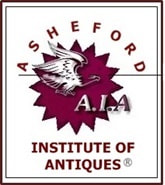 NOTE: For readers seeking more information about the Asheford Institute Of Antiques distance-learning program on professional-level appraising, the study of antiques, collectibles, vintage and mid-century modern items, please click here to visit the school's Home Page. Should you have additional questions about the Asheford program, you can also write to the school at: info@asheford.com or call the Registrar's Office toll-free at: 1-877-444-4508. Comments are closed.
|
AIA StaffWe're providing our students and reader's with the latest breaking news on events and happenings that we think might be of interest to both collectors and dealers alike. Including changes within the world of antiques, vintage, collectibles and appraising that might just have an effect on your bottom line. We're also interested in hearing from you - so if you've got a great newsworthy story, let us know, and you just might find it here! Archives
July 2024
CategoriesLegal Disclaimer: Extraneous opinions, statements and comments made by individuals represented within these posts do not necessarily reflect those of the Institute. The publication naming of specific business entities, organizations, and concerns, contained herein, in no way represents an endorsement or recommendation of services or products by the Institute. Publicly identifiable information contained herein (including, but not limited to contact information), has been intentionally limited where possible, due to privacy and legal concerns related to the digital dissemination of information through online means. All views expressed herein are those of their respective owners. The Institute is in no way responsible, financially or otherwise, for the accuracy or validity of statements contained within published posts from sources that originate and appear outside of the written and expressed views of those submitted by the Institute.
|
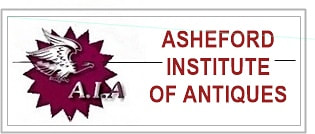

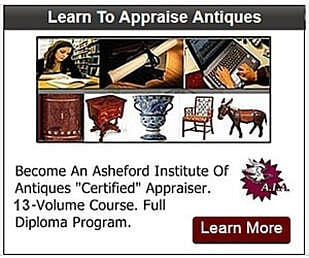
 RSS Feed
RSS Feed
